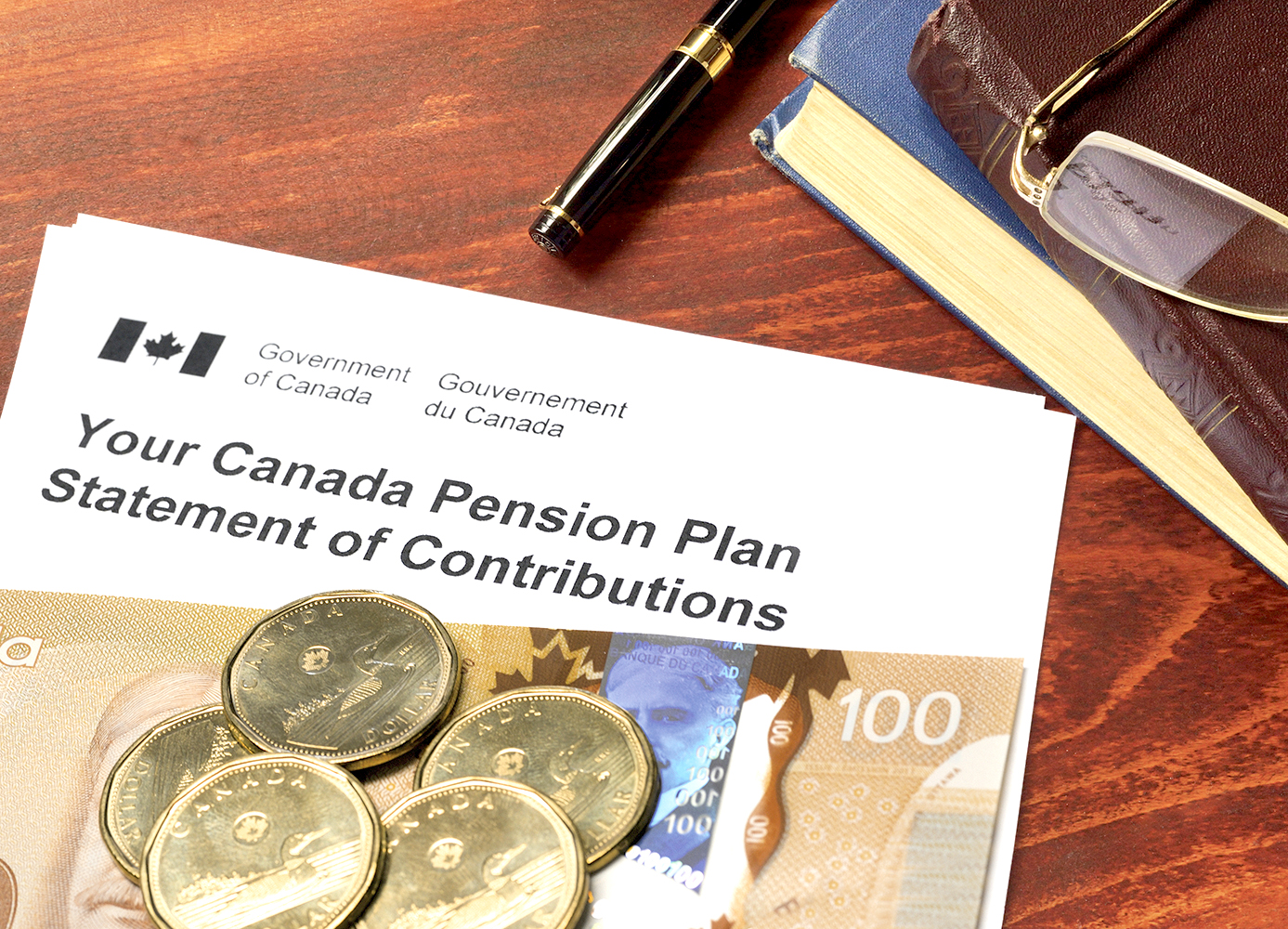Find out how patience can pay off
By Olev Edur
As noted in our recent article When to Start Collecting Public Pension Benefits, we’ve received a number of questions from readers asking how to calculate the best time to begin collecting their government pensions. The calculations involved can be complex, depending on one’s circumstances; by way of illustration, the following is a response to one of those questions, presented as a case study.
Our reader wrote, “I’m 64, employed full-time, and in good health, so I plan to continue working for several more years. My gross income is about $50,000 annually, and that’s plenty for my current needs. But I have no pension plan, only about $100,000 in an RRSP, and I’m concerned about what will happen when I retire. I read somewhere that at age 65, I should cancel the Canada Pension Plan (CPP) premiums I pay through my work. Is this a good idea? I was also wondering: I know I’ll have to convert my RRSP into a RRIF or annuity by age 71, but would it be advisable to do so now?”
Given our reader’s situation, he’s right to be concerned about having an adequate retirement income once he’s no longer working. Let’s see what would happen if he started collecting CPP and Old Age Security (OAS) at age 65, as opposed to waiting until, say, age 70, and which choice would result in increased monthly benefits.
If he cancelled his premium payments and began collecting CPP at 65, these benefits would be added to his work income of $50,000 and, given tax rates in his home province of Newfoundland and Labrador, they’d be taxed at 35%. So if he were entitled to, let’s say, $900 a month in CPP benefits at age 65, he’d get to keep only $585 (65% of $900).
If, however, he also contributed $900 to his RRSP each month, he’d get that tax back and his RRSP would increase by $10,800 each year. After factoring in some modest growth, his RRSP might be increased by a total of almost $60,000 over five years as a result of these contributions.
(While RRSP contributions are limited to 18% of earned income—that is, employment income—per year, you’re allowed to carry unused contribution room forward indefinitely. Given that our reader has only $100,000 in his RRSP at this point, it seems virtually certain that he has accumulated a fair bit of unused contribution room over what presumably has been a 40- to 45-year working career, so contributing $10,800 on an income of $50,000 shouldn’t be a problem.)
Old Age Security (OAS) Pension
At 65, our reader would also become eligible for OAS and, assuming that he’s lived in Canada most of his life, he should be eligible for the maximum benefit, which as of mid-2020 was $613 a month (this benefit is indexed quarterly to inflation, and CPP is indexed annually, but for simplicity, we can overlook these complications; after all, the purchasing power of this money will theoretically remain constant). Assuming that he began collecting OAS at 65, he’d also have to pay 35% tax on these benefits, unless he had enough accumulated RRSP contribution room to offset this income, as well.
Let’s assume that he has a total of $50,000 or more in unused RRSP contribution room at age 65—this is actually typical of many retirees who have worked all their lives but contributed little towards their retirement savings until they reached age 50 or so. Those annual CPP-related contributions of $10,800 would have reduced this unused room by $1,800 a year, since his income would have generated only $9,000 (18% of $50,000) in new contribution room each year. Over five years, then, he would have used $9,000 of that unused room ($1,800 for each of five years), leaving $41,000.
As a result, if he started OAS at age 65 and also contributed the equivalent of five years’ benefits totalling $36,780 ($613 a month times 60 months) to his RRSP, he could use that available deduction room to offset the tax, and allowing for some growth in the plan, he might add a further $40,000 to his RRSP balance by age 70. He would also have $4,220 of unused contribution room left after the OAS- and CPP-related contributions.
Timing the RRIF Rollover
Now, if he also rolled his current RRSP into a RRIF at 65, he’d have to open a new RRSP for continuing contributions. And he’d have to start withdrawing minimum amounts from the RRIF every year—on a $100,000 plan, these minimums would range around $5,000 a year between ages 65 and 70 (the percentage of the plan that one must withdraw increases slightly each year and is geared to providing income until about age 95). Since he has less than a year’s worth of unused contribution room left, most of this money would be taxed at 35%, leaving him with $3,250 (65% of $5,000) for four of those five years, and a bit less than $5,000 for the year he uses up his remaining contribution room.
In other words, he’d be depleting his RRIF by about $25,000 over five years but would get to keep less than $18,000 (a bit less than $5,000 plus four years times $3,250). Since his RRIF income will likely be taxed at a much lower rate once he’s retired, it would be best to leave the RRSP intact—that $100,000 might grow to $110,000 over five years and, given those OAS and CPP contributions totalling another $100,000 or so, he’d end up with an RRSP containing about $210,000 at age 70. Rolled into a RRIF at that point, this sum would generate minimum payments averaging around $10,500 a year.
Taken all together, his retirement income at age 70 would consist of $10,500 yearly from the RRIF, plus $7,356 from OAS ($613 times 12), plus $10,800 from CPP ($900 times 12), for a total of $28,656.
Deferring Until Age 70
What would happen if our reader waited until age 70 to claim his OAS and CPP benefits, and left the RRSP as is? First, he’d be required to pay about $2,000 a year in CPP premiums from age 65 to 70, or about $10,000 in total. Meanwhile, each month from age 65 until age 70 that he deferred CPP, his benefits would be increased by 0.7%, or 8.4% a year (there are no further increases after age 70). (See end note.)
As a result, at age 70, he’d be entitled to 42% more CPP than at age 65 (8.4% times five years), or $1,278 a month/$15,336 a year. OAS benefits increase by 0.6% a month, or 7.2% a year, from age 65 to age 70, so he’d be entitled to about $834 a month ($613 times 7.2% times five years) or $10,004 a year at age 70. The two plans combined would generate $25,340 of income annually.
Meanwhile, his $100,000 RRSP might have grown to, say, $110,000 and, rolled into a RRIF at age 70, it would generate an average $5,500 minimum annual withdrawal. Added to his CPP and OAS income, he’d end up with a total of $30,840 in annual income. That’s $2,184 a year better than the age-65 option. He will, however, also need to recoup that $10,000 in additional CPP premiums he paid from age 65 to 70, which would eat up that annual $2,184 advantage over the next 4½ years or so; around age 74½, then, he will have broken even.
Beyond that age, however, his income would continue to be $2,184 a year higher, so over the following 10 years, he will have gained $21,840 more than if he’d started taking CPP and OAS benefits at age 65 rather than 70 (and made corresponding RRSP contributions). And of course, the longer he lives, the greater that advantage will become.
Clearly, the foregoing is a very rough calculation based on what little information our reader provided in his letter, and includes some entirely hypothetical assumptions about investment growth rates, unused RRSP contribution room, et cetera.
The best advice one can give about deciding the timing of CPP, OAS, and RRSP-to-RRIF rollovers, is that you should get some input from a financial advisor who can look at all the relevant details of your situation, including factors that may have been omitted from this analysis; the fees involved could prove to be money very well-spent.
Photo: iStock/Osarieme Eweka.
Note: There’s an option whereby from age 65 to 70, someone who’s still working and already collecting CPP benefits can opt to stop making CPP contributions, continuing to work and earn a salary without having to pay CPP premiums. You need to file a form CPT30—“Election to Stop Contributing to the Canada Pension Plan”—after age 65. (Obviously, if you’re no longer working, you don’t need to pay anything to CPP no matter how old you are, since premiums are based on your work income.) Under this option, you can save quite a bit in premium payments over those five years, but you’d lose the Post Retirement Benefit (PRB), which becomes quite substantial as you approach age 70 (special rules apply to the Quebec Pension Plan).
The net result is that those premium savings could be exceeded by higher ongoing benefits in little more than another five years. There are numerous factors in the equation and under certain conditions—among the low-income self-employed, for example—it may be advantageous to stop paying premiums, but for the most part, the added PRB benefits can be worth the price.






